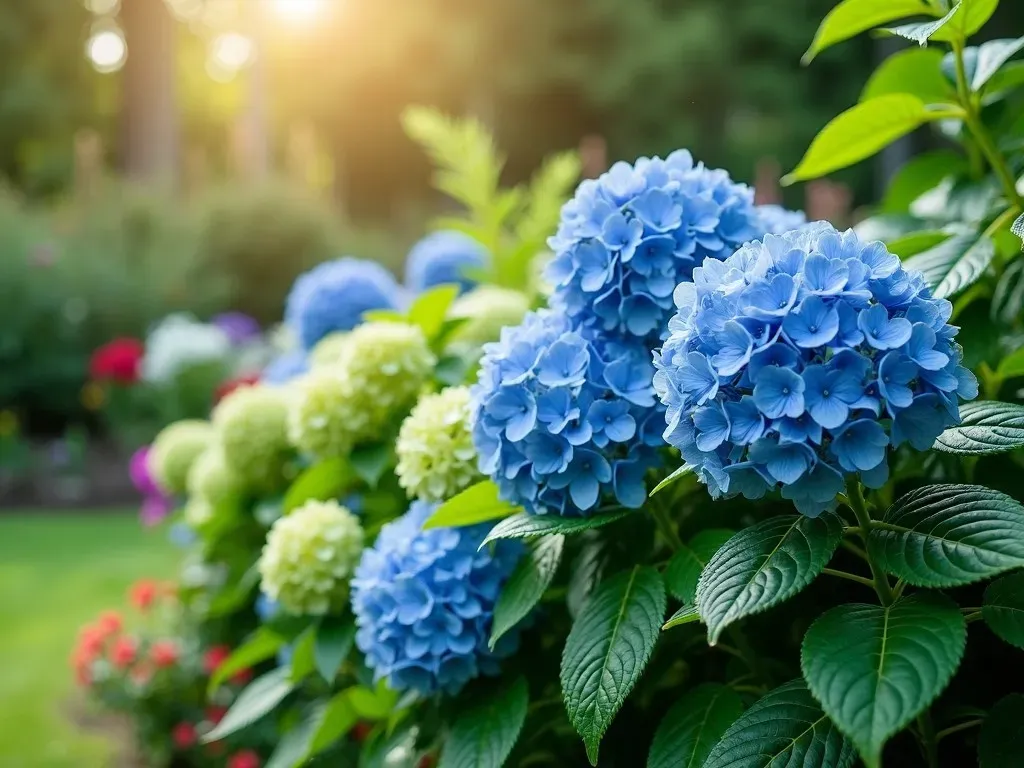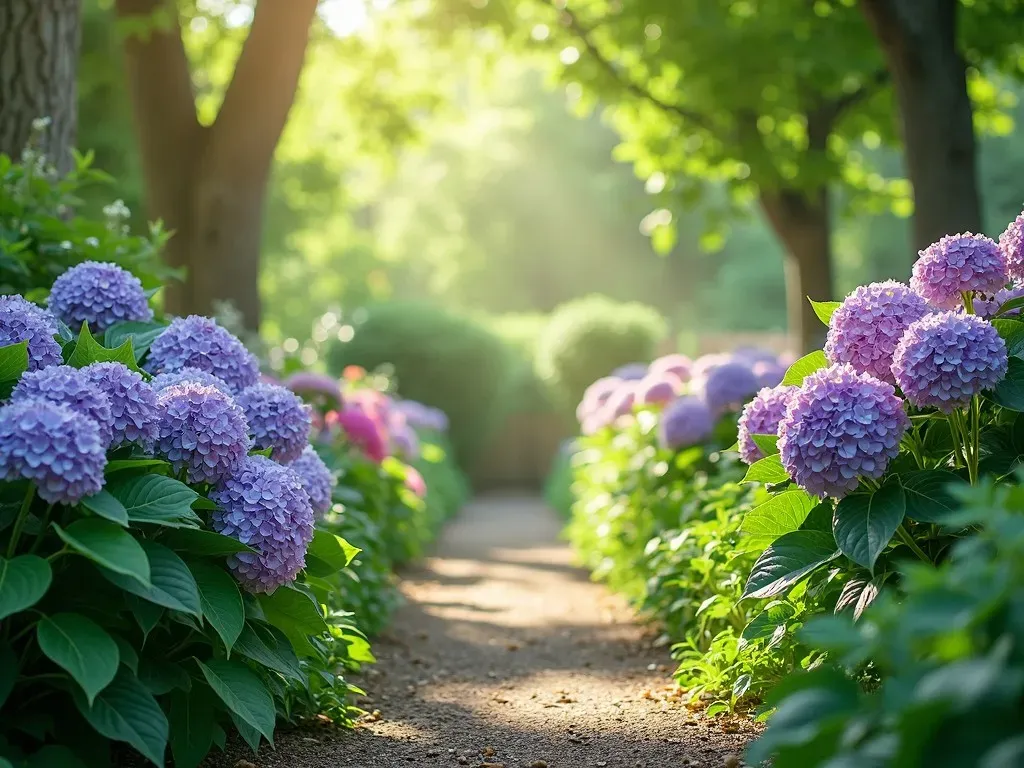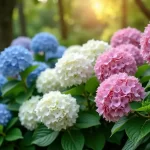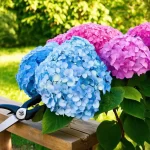Evergreen hydrangeas are unique and fascinating shrubs that retain their lush foliage throughout the year, allowing for consistent greenery in your landscape. Unlike their deciduous counterparts, these lovely plants bring a year-round charm, ensuring your garden looks vibrant even in the winter months.
What are Evergreen Hydrangeas?
Evergreen hydrangeas are a category within the hydrangea family characterized by their ability to retain leaves throughout the year. While many people are familiar with deciduous hydrangeas that lose their foliage in winter, evergreen varieties provide a stunning alternative for those seeking a shrub that maintains visual interest year-round. Notably, the most popular type of evergreen hydrangea is Hydrangea integrifolia, commonly known as the climbing hydrangea.
Are Hydrangeas Evergreen or Deciduous?
When considering hydrangeas for your garden, it’s essential to understand that not all hydrangeas are evergreen. Many hydrangea species, including hydrangea macrophylla and Hydrangea paniculata, are deciduous, meaning they lose their leaves during the colder months. In contrast, evergreen hydrangeas keep their foliage, thereby contributing to the overall aesthetics of the garden throughout the different seasons.
| Hydrangea Type | Deciduous/Evergreen | Common Name |
|---|---|---|
| Hydrangea macrophylla | Deciduous | Bigleaf Hydrangea |
| Hydrangea paniculata | Deciduous | Panicle Hydrangea |
| Hydrangea integrifolia | Evergreen | Climbing Hydrangea |
| Hydrangea seemanii | Evergreen | Evergreen Climbing Hydrangea |
Characteristics of Evergreen Hydrangeas
- Foliage: Evergreen hydrangeas often have glossy, dark green leaves that add texture and color to the landscape even during winter.
- Flowers: These hydrangeas typically bloom in the summer, showcasing clusters of white or pastel flowers that create a soft and inviting atmosphere.
- Growing Conditions: They thrive best in partial shade and well-drained soil, making them an excellent choice for shaded areas of the garden.

Popular Evergreen Hydrangea Varieties
Several varieties of evergreen hydrangeas can enhance your garden. Below are a few notable ones:
-
Hydrangea integrifolia: Known for its climbing ability, this variety can reach heights of up to 60 feet. Its beautiful, small white flowers appear in late spring, making it a favorite for trellises and fences.
-
Hydrangea seemanii: This climbing hydrangea is native to Central America and features thick leaves that resemble those of an evergreen magnolia. It can reach heights of up to 30 feet and provides stunning creamy blossoms.
-
Hydrangea arborescens: Also known as smooth hydrangea, this shrub grows up to 10 feet tall, offering large, showy flowers that bloom in the summer.
| Variety | Height (ft) | Flower Type | Best Growing Conditions |
|---|---|---|---|
| Hydrangea integrifolia | 40-60 | Lace-cap, White | Full sun to full shade |
| Hydrangea seemanii | 20-30 | Creamy | Partial shade |
| Hydrangea arborescens | 3-10 | Large white | Prefers well-drained soil |
Care Tips for Evergreen Hydrangeas
Proper care can enhance the longevity and beauty of your evergreen hydrangeas. Here are some guidelines:
- Watering: Regular watering is essential, especially during dry spells. Ensure that the soil remains moist but not waterlogged.
- Fertilization: Use a balanced, slow-release fertilizer in spring to encourage healthy growth and abundant blooms.
- Pruning: Prune after flowering to maintain a consistent shape and remove any dead or damaged branches.
- Protection from Frost: In colder climates, providing some winter protection through mulching can help shield the plants from frost damage.

Frequently Asked Questions (FAQ)
Q: Are hydrangeas evergreen plants?
A: Yes, select varieties of hydrangeas, such as Hydrangea integrifolia and Hydrangea seemanii, are classified as evergreen as they retain their leaves throughout the year.
Q: Do hydrangeas stay green in winter?
A: Evergreen hydrangeas will stay green during winter, unlike deciduous types, which lose their leaves.
Q: Is hydrangea a perennial?
A: Yes, hydrangeas are perennials and can live for several years when properly cared for.
Q: How do I protect hydrangeas in winter?
A: Mulching around the base of the plants and covering them during freezing temperatures can provide necessary insulation.
Q: What are common issues faced with evergreen hydrangeas?
A: Common issues include leaf spot, powdery mildew, and root rot. Proper spacing, air circulation, and avoidance of excessive moisture can help mitigate these problems.
Landscaping Ideas with Evergreen Hydrangeas
Incorporating evergreen hydrangeas into your landscaping can create gorgeous visuals year-round. Here are some creative ideas to consider:
- Entryways: Plant them alongside walkways or driveways to welcome guests with splashes of greenery and blooming flowers.
- Garden Borders: Use them as hedges or border plants to delineate different sections of your garden.
- Trellising: Climbing varieties can be trained to grow on trellises or fences, adding vertical interest to your plot.

Evergreen hydrangeas are a delightful addition to any garden, offering visual appeal and charm through every season. With their unique ability to retain foliage, they open up numerous possibilities for creative landscaping and design. To learn more, visit Gardening Know How for extensive insights into Hydrangea Care and varieties.


